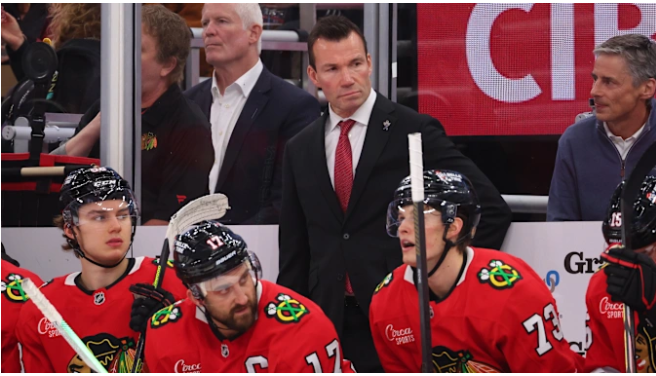Entering his third season as head coach of the Chicago Blackhawks, Luke Richardson faces the challenge of leading a team that has struggled at the bottom of the league during his tenure as they work through a rebuilding phase. His record over these three seasons stands at 51-105-14, and with general manager Kyle Davidson acquiring seven players in free agency, there is an expectation for improvement each year.
However, merely examining the win-loss record doesn’t fully capture Richardson’s performance. It’s crucial to see his effectiveness in maximizing player potential and fostering development. For a team looking to make a playoff push in a few years, player development is essential in progressing to the next level.
So far, Richardson’s decisions regarding lineups have raised concerns. In the first six games of this season, Lukas Reichel was scratched for four, and when he finally played, he found himself on the fourth line alongside older players Craig Smith and Pat Maroon, even being placed at center, despite his proven success as a winger. It wasn’t until injuries to some teammates that he returned to a more effective line, which contributed in their loss to the Buffalo Sabres. His inconsistent usage last year also hindered his development.
Similarly, Nolan Allan, who had a strong training camp and started in the first game, was sidelined for two consecutive games due to deeper roster adjustments. Meanwhile, Isaak Phillips, now 23 years old and with just 53 games played for the Hawks, hasn’t received consistent playing time under Richardson, despite the lackluster start from T.J. Brodie.
Sitting young players for extended periods does little for their growth, while retaining struggling veterans isn’t ideal for a rebuilding team. A recent decision to make Phillip Kurashev a healthy scratch, while keeping veteran Pat Maroon in the lineup, further compounds concerns. Kurashev has played well as second-line center with capable wingers but is naturally a better winger.
The coaching strategy seems to overlook established chemistry among younger players, such as Connor Bedard and Kurashev. It would be more beneficial to give younger, skilled players greater opportunities in the lineup. Richardson’s past coaching experience includes roles with the Montreal Canadiens, New York Islanders, and Ottawa Senators, where he was on teams that occasionally made the playoffs but never faced a major rebuilding effort.
While winning games is important, the primary focus for the Blackhawks should be on developing young talent for future success. Given Richardson’s limited experience in coaching a rebuilding team, the risk of mismanaging player development is high. With a strong pool of prospects, questions arise about whether he is the right coach to nurture the next generation of Blackhawks players, especially since he has struggled with the current young roster.
Although it’s early in the season with only six games played, it remains valid to speculate on whether Luke Richardson is the right long-term fit for the head coach position with the Chicago Blackhawks.
